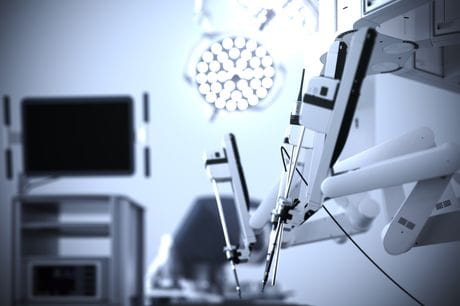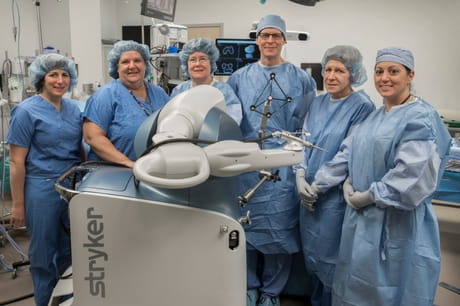Traditional versus robotic surgery—what’s the difference?
Surgery can be stressful. Even the most routine procedures require expert precision and planning, which is why your surgeon may consider robot-assisted tools. Surgeries conducted primarily with these tools are called robot-assisted surgery or robotic surgery.
What are different types of robotic arm surgery
“Robot-assisted surgery has many benefits, especially in minimally-invasive procedures. But it isn’t right for every surgery or every patient,” says Dr. Bogdan Protyniak, a colon and rectal surgeon at Geisinger Wyoming Valley Medical Center. “Your doctor will assess you individually and make a recommendation for the type of surgery that should be performed.”
Robotic surgery was first introduced with the da Vinci Surgical System, approved by the Food and Drug Administration (FDA) in 2000. Originally designed for cardiac surgery, the da Vinci Surgical System and its subsequent generations have several arms, including a camera arm and surgical arms. The surgeon is able to control the arms from a console within the operating room featuring a high-definition, 3D display.
With the specially designed displays, surgeons are able to see critical structures more clearly for improved safety and have increased control for maximum precision. The much smaller robotic “hands” also improve minimally-invasive procedures, as they are able to get into places and perform tasks through tiny incisions that human hands cannot. We have seen an increase in robotic procedures, which translate into patient benefits in a number of surgical specialties, including:
- General surgery
- Colorectal
- Thoracic
- Surgical oncology
- OBGYN
- Urology
In orthopedics, a new type of surgical robot called the Mako, designed to assist with joint replacement surgeries, has helped benefit our patient care. The machine takes exact measurements to perfect the fit of the replacement joint and assists with seamless placement. It also offers 3D imaging, helping the surgeon plan ahead and execute smoothly.
The benefits of robotic surgery
“In general, patients and doctors prefer minimally-invasive surgeries over the traditional open approach because of the decreased risk of complications, smaller scars, faster recovery, shorter hospital stay, and reduced pain,” says Dr. Protyniak. “This is where the true value of robotic surgery lies. Thanks in part to its easier learning curve, wristed instruments and improved visualization, we can disturb less of the surrounding tissue resulting in fewer long-term side effects.”
In fact, the machines now assist nearly 90 percent of prostate removals. However, robotic surgery isn’t always the best choice for cancer surgeries and this should be discussed with your surgeon.
Robotic surgery does help to minimize complications and speed recovery—especially compared to traditional “open” surgery. However, some surgeons performing complex or high-risk surgeries still prefer the traditional method for many reasons, including an emergency procedure or one in an area where there is a lot of scar tissue.
“When you are faced with a surgery that could be performed traditionally or with robotics, your doctor will discuss your options with you, as well as any pros and cons,” says Dr. Protyniak. “Together, you can make a decision on which option is best for your situation.”
Next steps:
Make an appointment with Bogdan Protyniak, MDLearn more about robotic surgery at Geisinger





